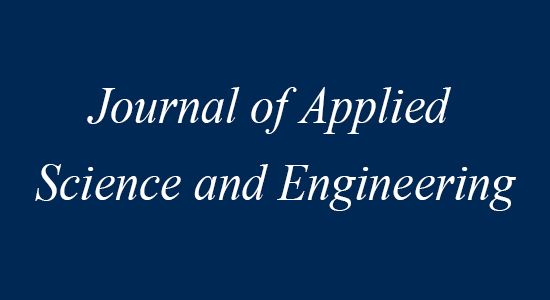REFERENCES
- [1] Cardona, A., and Idelsohn, S., “Solution of non-linear thermal transient problems by a reduction method,” Int. J. Num. Meth. Eng., Vol.23, 1023-1042(1986).
- [2] Dems, K., and Rousselet, B., “Sensitivity Analysis for Transient Heat Conduction in a Solid Body -Part 1: External Boundary Modification, Part II: Interface Modification,” Structural Optimization Vol. 17, 36-45,46-54(1999).
- [3] Fung, T. C., “A Precise Time Step Integration method by Step-Response and Impulsive-Response Matrices for Dynamic Problems,” International Journal for Numerical Methods in Engineering, Vol.40, 4501-4527(1997).
- [4] Gu, Y. X, and Cheng, G. D., “Structural modeling and sensitivity analysis of shape optimization,” Structural Optimization, Vol.6 (l): 29-37(1993).
- [5] Gu, Y. X., and Grandhi, R. V, “Sensitivity Analysis and Optimization of Heat Transfer and Thermal-Structural Designs,” AIAA-98-4746, (1998).
- [6] Gu, Y. X., Chen, B. S., and Zhang, H. W., “Precise Time-Integration Method with Dimensional Expanding for Structural Dynamic Equations,” In: Computational Mechanics for the Next Millennium, Wang, C. M., Lee, K. H., Ang, K. K. (Eds.), Elesvier, Amsterdam, 1999, Proc. APCOM'99, Singapore, 1999,475-4
- [7] Gu, Y. X., Zhang, H. W., Guan, Z. Q., Kang, Z., Li, Y. P., and Zhong, W. X., “New generation software of structural analysis and design optimization—JIFEX,” Int. J. Struct. Eng. Mech., Vol.7(6), 589-599(1999).
- [8] Haftka, R. T., “Calculation of Sensitivity Derivatives in Thermal Problems by Finite differences,” International Journal for Numerical Methods in Engineering, Vol. 17, 1811-1821(1981).
- [9] Haftka, R. T., “Techniques for Thermal Sensitivity Analysis,” International Journal for Numerical Methods in Engineering, Vol. 17, 71-80(1981).
- [10] Kleiber, M., and Sluzalec, A., “Material Derivative and Control Volume Approaches to Shape Sensitivity Analysis of Nonlinear Transient Thermal Problems,” Structural Optimization, Vol. 11, 56-63(1996).
- [11] Kong, X. D., “Precise Time Integration Algorithms of Ordinary Differential Equations and Application in Multibody System Dynamics,” Ph.D. Dissertation, Dalian University of Technology, Dalian, China (1998).
- [12] Lewis, R. W., Morgan, K., Thomas, H. R., and Seelharamu, K. N., The Finite Element Method in Heat Transfer Analysis, John Wiley & Sons, New York, (1996).
- [13] Lin, J. H., Shen, W. P. and Williams, F. W., “A high precision direct integration scheme for structures subjected to transient dynamic loading,” Computers & Structures, Vol. (56):l, 113-120(1995).
- [14] Moler, C. B., and Van loan C. F., “Nineteen Dubious ways to Compute the Exponential of a Matrix,” SIAM Review, 20:pp801-836 (1978).
- [15] Tamma, K. K., and Chen, X., “Further Developments Towards A New Virtual-pulse Time Integral Methodology For General Non-linear Transient Thermal Analysis,” Communic. Num. Meth. Eng., Vol. 10, 961-970, (1994).
- [16] Tamma, K. K., and Raikar, S. B., “Evaluation and Applicability of Hybrid Transfinite-element formulations with particular reference to radiation,” Numerical Heat Transfer, Part B, Vol. 15, 99-115, (1989).
- [17] Thornton, E. A., “Thermal Structures for Aerospace Applications,” AIAA education series, Virginia, 1996.
- [18] Tortorelli, D. A., and Haber, R. B., “First-Order Design Sensitivities for Transient Conduction Problems by an Adjoint Method,” International Journal for Numerical Methods in Engineering, Vol.28, 733-752,(1989).
- [19] Wood, W. L., Pratical Time-stepping Schemes, Clarendon Press Oxford, (1990).
- [20] Yang, H. T., “A Precise Algorithm in the Time Domain to Solve the Problem of Heat Transfer,” Numerical Heat Transfer, Part B, Vol.35, 243-249, (1999).
- [21] Zhong, W. X., and Williams, F. W., “A Precise Time Step Integration Method,” J. Mechanical Eng. Sci., Vol-208, 427-430,(1994).
- [22] Zhong, W. X., Zhu, J. P., and Zhong, X. X., “On a New Time Integration Method for Solving Time Dependent Partial Differential Equations,” Computational Methods in Applied Mechanics and Engineering, Vol.l30, 163-178(1996).
















